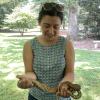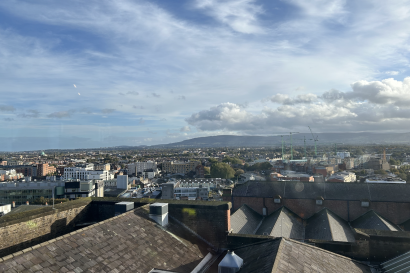When I have free time, especially with an anime and comic convention a few days away, I greatly enjoy the art of cosplay. Cosplay is short for "Costume Play," and it’s the recreation of a (usually) fictional character’s appearance, and for more dedicated fans, their personality and mannerisms too. Cosplay is very difficult and requires a creative mind and a variety of skillsets, including the application of makeup, sewing, or prop making among many others. Cosplayers strive to balance accuracy and originality, so even if many people decide to cosplay one character, every cosplay is unique.
Last June, I decided to cosplay Sans from the popular video game Undertale for A-kon, the longest running, national anime convention held annually in Dallas, TX. Since the character is a skeleton, I wanted a good mask, and decided to make a full sized skull out of paper mache because of its light, easy, and breathable. Given that this was my first time working with paper mache, I thought it turned out pretty well, and I tucked "paper mache" in my metaphorical cosplay skillset utility belt.
I was explaining this experience to my host mother, and I deducted from the confusion in her expression that Japanese people don't really make paper mache crafts. At least, maybe not the way I was describing. Since my little host sister, Yuka, was having a costume party next week, she naturally wanted me to teach them how to make it. She wanted to make Japanese oni, a traditional ogre/monster specifically. After a week of hard work, it really paid off! It was a great collaboration, and I think both oni heads we made came out amazing!
Yuka was the perfect foil to my cosplay-driven fretting as I furiously scrolled through tutorials on how to seamlessly add facial features, reminding me it was just a costume party as she glued the cardboard cutouts of facial features onto the mask. (Turns out you add them to the balloon and then paper mache them, but we didn't have time to go back and do all of that…) Similarly, I taught her that the basis of art is flexibility, and that you have to make the best out of your mistakes. That’s why the red oni has four teeth, and both oni have inverted eye colors. A casual observer wouldn't be able to tell that wasn’t deliberate. We learned a lot about art by not taking things too seriously.
It was a wonderful bonding experience that I think brought Yuka and I closer together! She's such a bright, wonderful 10-year old, always speaking slowly so I can understand her Japanese, and always willing to check my written Japanese. In return, I let her read English books to me and teach her how to make paper mache projects, as well as enjoy whatever new recipe mom and I cook up. Is this what it feels like to be an older sister?
Getting to know each member of the host family, spending whatever time you can with them, learning their daily routines and personalities- forming these relationships are honestly the best part of studying abroad. Though they're always busy with work or cram school, I hope I can find time to bond with my Dad and host brother as well.

Naomi Wolfe
<p>My name is Naomi Wolfe and I am a Japanese major and Sociology minor studying in Japan for the 2016-2017 academic year in the hopes of understanding Japanese culture, people, and society. I studied in the Tokyo Language & Culture Program for the fall semester and cannot wait to see what else I can learn in the Nagoya Direct Enrollment Program in the spring semester!</p>









